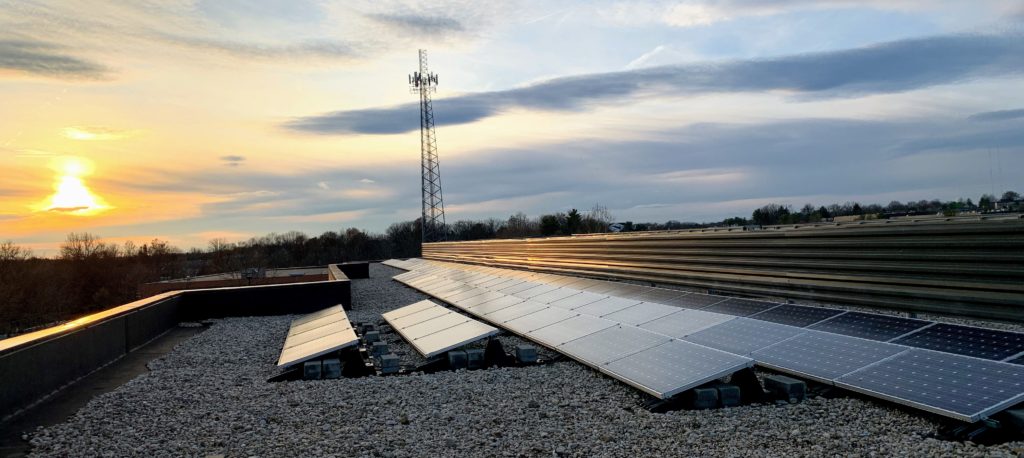On the rooftops of three St. John Properties’ buildings, a sustainability initiative has been playing out for a decade. While investigating what sustainability practices made sense for its properties, St. John installed a 125-kilowatt solar array atop three, full-service, Class A office buildings in 2010.
The systems which consist of about 550 panels, have
performed well, said Ryan Schwabenbauer, Director of Sustainability. With
routine maintenance, the installations have required only one panel replacement
in a decade and the initiative has delivered a full return on investment.

But other factors dissuaded the company from installing
solar arrays on additional properties. St. John Properties determined it could
generate more benefits for tenants by adopting other measures. The company
focused its sustainability efforts on LEED and high-performance buildings, and
has delivered 68 LEED Certified buildings over the last decade. Government
incentives encouraging solar and the market for Renewable Energy Credits has decreased
significantly. In recent years, those decreases have been equalized by an
increase in solar panel technology and a decrease in costs.
On-site solar installations are dropping in price and represent
an attractive possibility for commercial real estate properties to contribute
to Maryland’s generation of clean, renewable energy. But solar is not a viable
project for every building. Consequently, developers and legislators need to
consider several factors before embarking on or mandating on-site solar
installations, said Tom Ballentine, Vice President for Policy and Government
Relations for NAIOP Maryland. They include the following:
- The US Energy Information Administration tracks
11 different on-site power generation technologies - Solar mandates would require property owners to
install solar arrays that are not viable - Limits on net metering in Maryland prevent solar
arrays sized to meet some commercial real estate needs from selling excess
electricity to the grid - Maryland limits on meter aggregation prevent
private property owners moving excess electricity from a generating facility to
nearby buildings or to other buildings within a commercial portfolio - Limits on the size of on-site electric
generation could require some commercial and industrial projects to receive
approval from the Maryland Public Service Commission for approval of solar power
generation systems - Urban solar installations raise issues of
shadowing and air rights adjacent to solar equipped buildings - Solar installations limit the owner’s ability to
accommodate supplemental power, air conditioning equipment or antennas required
by building tenants. Office tenants – especially defense/government contractors
and mission critical operations – frequently require additional equipment and
those requirements may not be known at the time of construction. - Some building sites may include better options
for solar installations, such as over the top of parking structures or adjacent
green spaces.